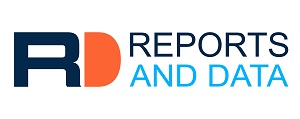Global Post-harvest Treatment Market to Reach USD 4.5 Billion by 2034, Driven by Sustainability and Technology Adoption

Reports And Data
Post-harvest Treatment Market is set for strong growth, with market size projected to rise from USD 2.2 billion in 2024 to USD 4.5 billion by 2034
VANCOUVER, BRITISH COLUMBIA, CANADA, August 20, 2025 /EINPresswire.com/ -- The global Post-harvest Treatment Market is set for strong growth, with market size projected to rise from USD 2.2 billion in 2024 to USD 4.5 billion by 2034. This growth is supported by increasing food demand, the urgent need to reduce food waste, and growing adoption of eco-friendly technologies across the agricultural sector.According to industry reports, the demand for food preservation is expected to increase by 20% over the next decade, while the adoption of sustainable treatments is anticipated to grow at a rate of 15% annually. Key trends shaping the market include higher consumer preference for fresh produce, stricter sustainability goals from governments, and rising investment in research and technology. Recent studies highlight a 25% increase in R&D spending for eco-friendly formulations and a 30% rise in the use of AI-driven monitoring systems, which are improving efficiency and product quality.
Get Free Sample PDF Copy Of This Report At: https://www.reportsanddata.com/download-free-sample/002066
Market Volume and Regional Outlook
In terms of volume, the market is expected to expand from 1.5 million tons in 2024 to 2.8 million tons by 2034. While market value is rising faster than volume, this indicates a trend towards premium solutions with higher effectiveness. The Asia Pacific region is expected to lead volume growth, with a projected CAGR of 6%, driven by higher agricultural output and rapid adoption of new technologies.
Price Trends
Prices in the Post-harvest Treatment Market have shown fluctuations due to factors such as raw material shortages, higher energy costs, and global supply-demand shifts. Data shows that average spot prices for key chemicals increased by 8% in 2024, while regional differences remain significant. North America continues to experience higher costs due to logistics and tariffs, whereas Asia Pacific benefits from lower production expenses. Inflation and currency changes in emerging economies also play a role in pricing. Companies adopting AI-driven pricing models have seen a 3% improvement in average selling prices and a 1.5% boost in profit margins, underscoring the benefits of digital strategies.
Key Growth Drivers
Sustainability remains one of the strongest drivers for the market. Initiatives such as the European Union’s Farm to Fork Strategy, which aims to cut food waste by 50% by 2030, are pushing adoption of eco-friendly post-harvest treatments. Technological innovation is another critical factor. McKinsey reports that AI use in agriculture is growing at 30% annually, bringing significant improvements in monitoring and preservation methods. In addition, government funding is accelerating progress. The U.S. Department of Agriculture recently allocated USD 500 million for research in sustainable post-harvest technologies, a move expected to boost innovation and adoption.
Top 10 Companies
Syngenta
Bayer CropScience
BASF
Dow AgroSciences
FMC Corporation
Nufarm
Adama Agricultural Solutions
Valent BioSciences
Corteva Agriscience
UPL Limited
Challenges in the Market
Despite the positive outlook, the industry faces hurdles. Regulatory compliance is costly and time-consuming, particularly in regions like Europe where REACH regulations require extensive testing before approval. Compliance costs have been rising by about 12% each year, slowing product launches. Operational barriers, such as inadequate cold chain infrastructure, also pose challenges. According to the World Bank, only 30% of developing countries currently have reliable cold chain systems, limiting the reach of treatments in some markets. Smaller companies further face difficulties in adopting advanced technologies, with nearly half citing financial constraints as the biggest barrier.
Post-harvest Treatment Market Segmentation
By Product Type
Chemical Treatments
Biological Treatments
Physical Treatments
By Application
Fruits
Vegetables
Cereals & Grains
By End User
Farmers
Food Processing Companies
Retailers
By Technology
AI-driven Monitoring Systems
IoT-based Solutions
Traditional Methods
By Distribution Channel
Direct Sales
Distributors
Online Platforms
Request customization on the report @ https://www.reportsanddata.com/request-customization-form/002066
Outlook
Overall, the Post-harvest Treatment Market is on a strong growth path, supported by the twin forces of sustainability and technological innovation. With governments, research bodies, and private companies increasing their focus on reducing food waste and improving food quality, the industry is expected to deliver more effective and eco-friendly solutions in the coming decade.
John W
Reports and Data
+1 2127101370
email us here
Legal Disclaimer:
EIN Presswire provides this news content "as is" without warranty of any kind. We do not accept any responsibility or liability for the accuracy, content, images, videos, licenses, completeness, legality, or reliability of the information contained in this article. If you have any complaints or copyright issues related to this article, kindly contact the author above.
Artificial Intelligence in Cybersecurity Market Set to Transform Threat Detection and Risk Management
Rising Vehicle Software Integration Drives Automotive OS Market to USD 20.4 Billion by 2032
CAGR of 3.5% | Alpaca Fiber Market Size, 2025 | Growing Demand and Business Outlook by 2031
Więcej ważnych informacji
 Jedynka Newserii
Jedynka Newserii

 Jedynka Newserii
Jedynka Newserii

Prawo

Kolejne polskie miasta chcą być przyjazne dzieciom. Planują stworzyć najmłodszym dobre warunki do rozwoju
Cztery miasta w Polsce posiadają tytuł Miasta Przyjaznego Dzieciom nadany przez UNICEF Polska. Dziewięć kolejnych miast czeka na certyfikację, a w ostatnich miesiącach do programu zgłosiło się kilka następnych. Na całym świecie inicjatywa została przyjęta już w ponad 4 tys. samorządów, a w Hiszpanii objęła połowę dziecięcej populacji miast. Program UNICEF-u ma na celu zachęcenie włodarzy do traktowania najmłodszych obywateli w sposób podmiotowy, respektowania ich praw i zaproszenia ich do współdecydowania o przyszłości.
Przemysł
W ciągu roku w Polsce ubyło 500 przedsiębiorstw odzieżowo-tekstylnych. Problemem są spadki zamówień z Europy Zachodniej i wzrost kosztów

Wartość rynku odzieżowego w Polsce wynosi 66,9 mld zł, z czego 10 mld zł to wartość krajowej produkcji – wynika z danych PIOT. Od czasu pandemii branża mierzy się z szeregiem wyzwań, wśród których najpoważniejsze to wzrost kosztów pracy i produkcji, przerwane łańcuchy dostaw i spadek zamówień – zarówno w kraju, jak i za granicą, a także wzrost nieuczciwej konkurencji na rynku, czyli głównie importu z Chin. Skala wyzwań sprawia, że w ubiegłym roku z rynku zniknęło 500 firm. Producenci odzieży apelują do rządu o wsparcie.
Handel
D. Obajtek: Orlen powinien być o 30–40 proc. większą spółką. Byłoby to z korzyścią dla konsumentów

Orlen jest największym polskim przedsiębiorstwem. Jego przychody ze sprzedaży w 2024 roku wyniosły blisko 295 mln zł, a rok wcześniej – ponad 372 mln – wynika z raportu Rzeczpospolitej „Lista 500”. W ubiegłorocznym rankingu Fortune 500 uwzględniającym największe korporacje znalazł się na 216. miejscu na świecie i 44. w Europie. Według Daniela Obajtka, europosła PiS-u i byłego prezesa Orlenu, spółka powinna jeszcze urosnąć, tym samym gwarantując konsumentom szereg korzyści, a także przyspieszać inwestycje m.in. w obszarze petrochemii i energetyki zero- oraz niskoemisyjnej.
Partner serwisu
Szkolenia

Akademia Newserii
Akademia Newserii to projekt, w ramach którego najlepsi polscy dziennikarze biznesowi, giełdowi oraz lifestylowi, a także szkoleniowcy z wieloletnim doświadczeniem dzielą się swoją wiedzą nt. pracy z mediami.








.gif)

 |
| |
| |
|